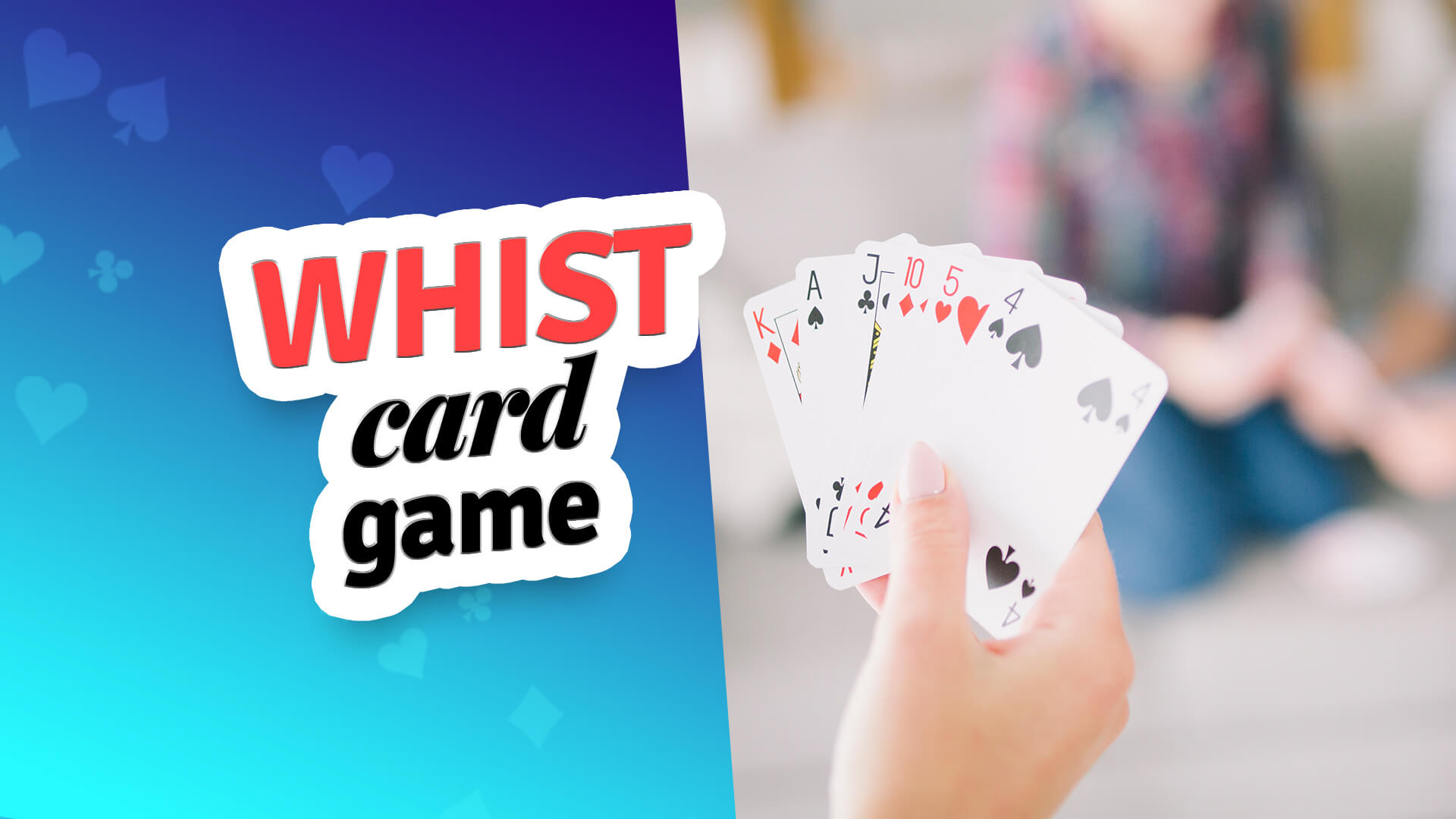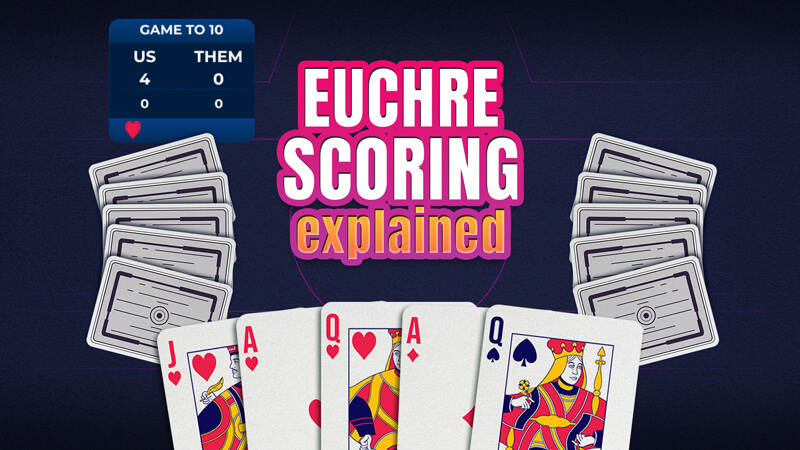How to Shuffle Cards

This post will provide you with valuable insights and practical tips to improve your shuffling skills. Next time you gather your friends and family for a fun game of Euchre, you can wow everyone with your technique. So, let’s dive in and learn how to shuffle cards.
1. Techniques on How to Shuffle Cards
When it comes to shuffling cards, there are several techniques you can employ. Each technique offers its own advantages and disadvantages, so it’s important to understand them before choosing the right one for your needs. Consider the following:
Types of card shuffling techniques
- Overhand shuffle. This technique involves repeatedly transferring small packets of cards from one hand to the other, resulting in a relatively simple and easy shuffle. It’s easy to learn but can be less effective in thoroughly mixing the cards.
- Riffle shuffle. A more intricate technique, the riffle shuffle involves dividing the deck into two halves and interleaving the cards together, creating a more thorough mix. The Riffle shuffle provides a more thorough mix but may require more skill and practice to perform smoothly.
- Hindu shuffle. Commonly used in India, this technique involves repeatedly taking small packets of cards from the top or bottom of the deck and releasing them back on top. This one offers good control over the cards, but may not provide as much randomness as other techniques.
- Cutting the deck. While not a shuffle technique on its own, cutting the deck involves dividing the deck into two or more parts before shuffling, adding an extra layer of randomness. Cutting the deck introduces an element of unpredictability, but it’s often used in conjunction with other shuffling techniques.
Some techniques may require more dexterity and practice to master. Consider the specific game you’re playing and the level of randomness needed. Choose a technique that feels comfortable and suits your style of play. Experimentation and practice will help you become proficient in your chosen technique, ensuring fair and randomized shuffling of the cards.
2. Overhand Shuffle
- Hold the deck in one hand, with your thumb on one side and your remaining fingers on the opposite side.
- Use your thumb to pull a small packet of cards from the top of the deck and transfer it to the other hand.
- Repeat this process, pulling packets of varying sizes and transferring them to the opposite hand.
- After transferring all the packets, square up the deck by aligning the cards together.
To achieve better randomness and mixing, make sure to vary the sizes of the packets during the transfer to introduce more randomness. Practice maintaining a steady rhythm and speed to create a consistent shuffling pattern. Consider incorporating additional techniques like cutting the deck or combining it with other shuffling techniques for enhanced mixing.
3. Riffle Shuffle
- Hold the deck with your thumbs on the inner edges and your remaining fingers on the outer edges.
- Bend the cards slightly inwards to create a gap between the two halves of the deck.
- Release the pressure on the cards, allowing them to interlace and riffle together.
- Gradually lower the cards as they interweave, forming a shuffled deck.
Technique variations
- Faro shuffle. In this variation, the deck is split into two halves and perfectly interwoven to create a seamless shuffle.
- Table riffle shuffle. This technique is performed on a flat surface, where the cards are riffled and spread across the table, allowing for a more thorough mix.
The Riffle shuffle can be challenging because it’s not easy to maintain control. Practice holding the cards firmly and maintaining a consistent grip to prevent the cards from slipping or falling. Ensure that both halves of the deck are evenly aligned and released simultaneously to achieve a balanced shuffle. Perform multiple Riffle shuffles to enhance randomness and distribute cards more evenly.
4. Hindu Shuffle
- Hold the deck with one hand, using your thumb on the top edge and your remaining fingers on the bottom edge.
- With your thumb, pull a small packet of cards from the top or bottom of the deck.
- Release the packet back onto the deck, allowing it to interlace with the remaining cards.
- Repeat this process multiple times, alternating between taking packets from the top and bottom, until the entire deck has been shuffled.
5. Cutting the Deck
To cut the deck properly:
- Hold the deck securely with one hand, ensuring that the cards remain in their shuffled order.
- Use your other hand to separate the deck into two or more sections.
- Swap the positions of the sections by moving one section to the top or bottom of the other section.
- Press the sections together to reunite the deck into a single entity.
6. Tips & Best Practices
- Maintain good card shuffling habits.Hold the deck firmly and distribute the cards evenly during shuffling. Avoid bending or damaging the cards while shuffling. Practice maintaining a consistent rhythm and speed during shuffling
- Use multiple shuffling techniques in combination. Combine different shuffling techniques to achieve better randomness and mixing. Alternating between techniques adds an extra layer of unpredictability to the shuffle.
- Consider factors that affect shuffling. One of these is the condition of the cards. Worn-out or sticky cards may require more careful handling during shuffling. Another one is the size of the deck. Larger decks may require more repetitions of shuffling techniques for adequate mixing.
Stay in the loop with all things Euchre!
Level up your game with our newsletter
Subscribe to our newsletter for the latest exclusive offers, tournament updates, game strategies, and tips. Join our Euchre community today and never miss a card-playing beat.
Sign up now and let the cards do the talking!
Copyright 2025 All rights reserved
This product is intended for people over 18 years of age for entertainment purposes. This game includes in-app purchases. Practice or success in social casino gambling does not imply future winnings in real money gambling and gambling in general.
Copyright 2025 All rights reserved
This product is intended for people over 18 years of age for entertainment purposes. This game includes in-app purchases. Practice or success in social casino gambling does not imply future winnings in real money gambling and gambling in general.





